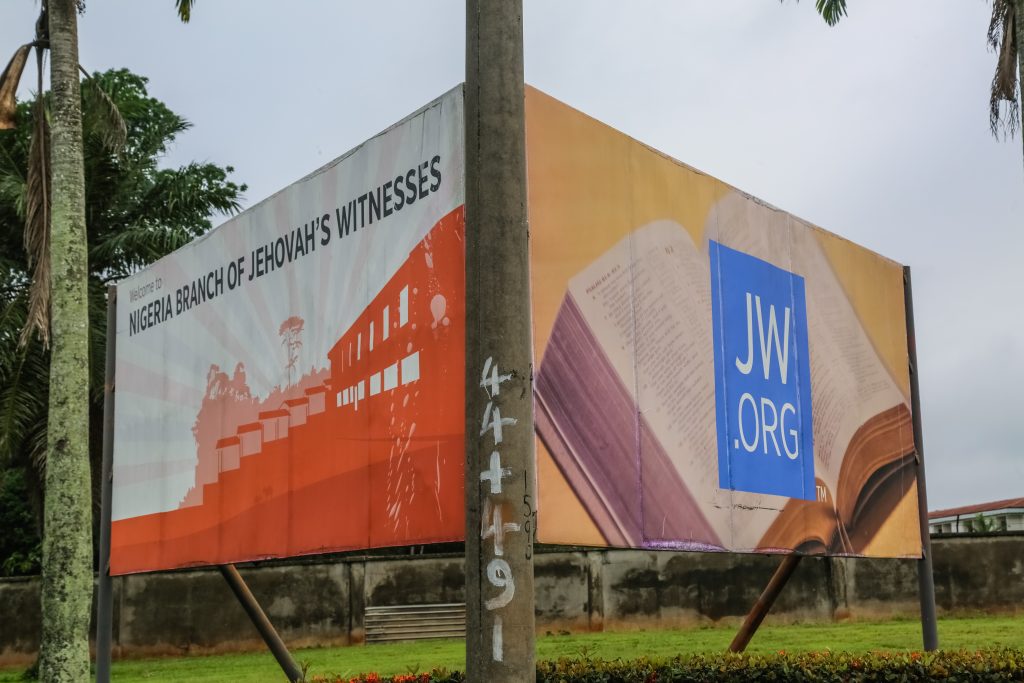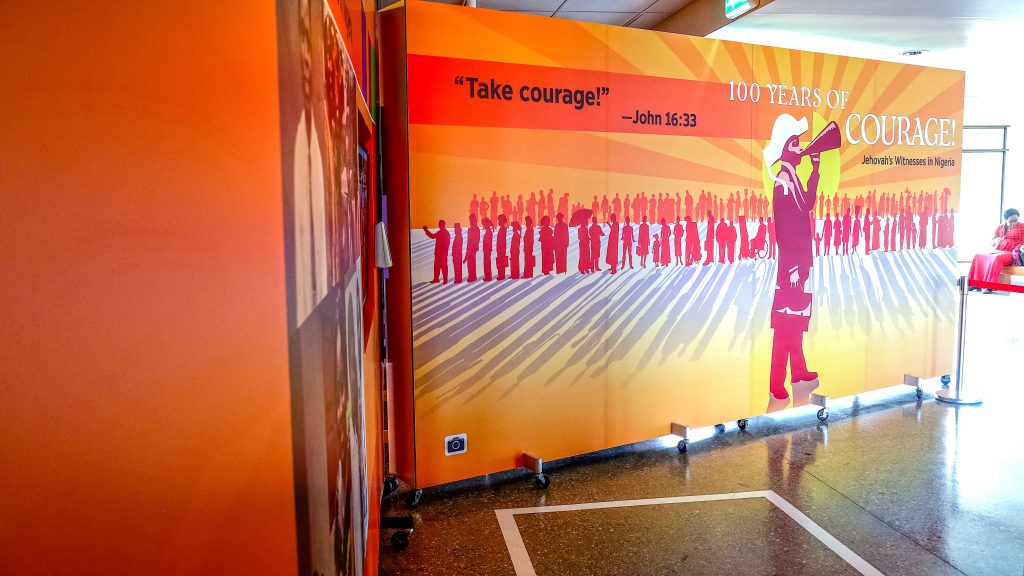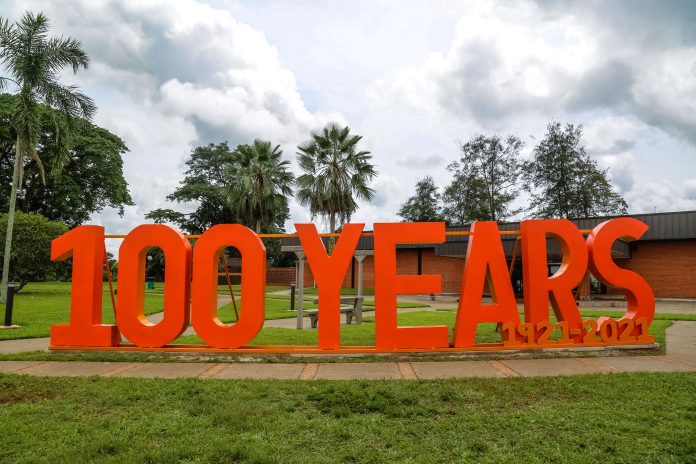Jehovah’s Witnesses recently opened a historical museum in Igieduma Village, Edo State. The Museum project, tagged, 100 Years of Courage, documents the activities of Jehovah’s Witnesses and others who were involved in the establishment of their preaching and community development activities in Nigeria since 1921.
Nigeria is a diverse country with a rich cultural and historical heritage. The people making up the country have various social, religious and cultural experiences dating back several centuries.
The advent of Christianity, with its increasingly various denominations, ushered in a new era in the history of the peoples making up Nigeria. Jehovah’s Witnesses make up a significant part of the Christian populace of Nigeria.
While the Covid pandemic raged, this museum project was launched at the Branch Office of Jehovah’s Witnesses at Igieduma village, Edo State. The project documents the 100 years of the work of the witnesses in Nigeria, and extraordinary story of ordinary Nigerians and foreigners, men, women and children, whose acts of faith laid the foundation for the thriving activities of over 400,000 witnesses in Nigeria. The museum also depicts the various influence of non-witness actors that impacted the spread of their activities, both positive and negative.
Early Days
The history of the Witnesses in Nigeria began with the arrival of Claude Brown, also known as Bible Brown, in 1921.
The Museum shows that Witnesses first established their branch office in Nigeria in the same year and started their evangelical ministry. From the small beginning, they set about reaching the major towns and hinterlands of Nigeria, the missionaries converting local people who in turn helped to spread the Bible message further afield. With limited transportation and mass communication methods available in the early 20’s and 30’s, the museum depicts how the Witnesses used a variety of initiatives, including the sound car, megaphones and phonographs to spread the message.
Challenges
The museum further documents how the spread of the word of God by Jehovah’s Witnesses in Nigeria had been spiced with various challenges. These included denial of physical access to areas they desired to preach in by local chiefs and religious priests, beatings of new converts by relatives who misunderstand the Witnesses beliefs, arson, and in some extreme cases, murder.
The Nigerian civil war brought a new dimension to the challenges faced by Jehovah’s Witnesses in Nigeria. Pictures and other artefacts in the museum show that the Witnesses in the former Biafran territory were cut off from their Nigerian brothers. With the resulting limited contact, the flow of Bibles and bible-based publications became strained. However, in remarkable demonstrations of faith, the Witnesses on both sides risked their lives and freedom to cross the lines to deliver publications and directions to those in the war zone. In heart-touching personal stories, the museum captures the experiences of specific witnesses who took part in the risky undertaking of crossing the war zones to reach their brothers and sisters on the other side. A cocktail of ingenuity and faith were often on display. Sadly, some Witnesses were killed by soldiers and others for refusing to fight in the war in obedience to God’s command in the Bible – You must not kill (EXODUS 20:13). In interesting twists, some of the soldiers who fought in the war, including some who encountered or even killed Jehovah’s Witnesses for refusing to join the war, became Jehovah’s Witnesses themselves after the war, some becoming elders and missionaries.
In all, the civil war and other challenges, did not appear to break the integrity of the Witnesses who continued preaching all through the war and even increased in number, as statistics available at the museum show.
Conventions
The museum featured some of the major milestones in the history of Jehovah’s Witnesses in Nigeria – their conventions, or large gatherings. Each year, Jehovah’s Witnesses invite their neighbours, friends, and family to join them for these large gatherings. From Lagos to Port Harcourt, the museum chronicled the district and international convention history of the witnesses. The international conventions involved invited foreign guests and speakers and simultaneous translation into multiple Nigerian languages. Baptism of new converts was a constant feature of these conventions. These large gatherings strengthened the unity of the witnesses and gave immeasurable impetus to their work in the country.
An Interactive Museum
The museum is made to meet modern standards and expectations of information consumption. The museum has audio-video media which tourists can play or view through a special wifi-bluetooth connection and installed TV screens. These help visitors to get additional information about the historical event or character on display but also to more intimately relive the event. Tourists are encouraged to come with their phones, tablets or other handheld devices with either a Bluetooth or wired headsets to have a more interactive experience.
Tourists React
Our correspondent captured the mood of the first set of tourists to the museum as they react to their experience. Seun Faluyi, a tourist, said: it is phenomenal to see how much opposition Jehovah’s Witnesses faced in the early years. But they were not deterred. They were brave, they were courageous. Celine, a teenage tourist, said: I like how interactive it is. Sometimes you forget how much history you have… According to Ayinola Olusoyan, I have been around Jehovah’s Witnesses for some time, although I am not one of them. Today is a great day for me to be here…
How to book a visit
According the Spokesman of Jehovah’s Witnesses, Olusegun Eroyemi, the public, journalists, tourists, and academics are invited to visit the museum following its official opening on June 1, 2023. The Museum is located at Igieduma village, Uhunmwonde Local Government, Edo State. To book a visit, an individual or group may visit jw.org, click on About Us, select Bethel Tours, then search for Nigeria on the drop-down menu. Then scroll to: Make a Reservation., then click on create an account to enable you receive details of your visit reservation by text or email. Then follow the prompts to complete your reservation. The visit is free, and a tour guide will be assigned to you or your group.















